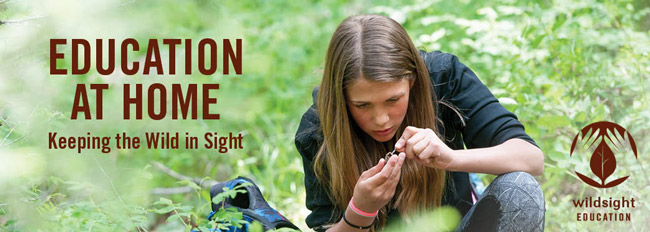
Photo: Julie-Anne Davies
|
|
,
Spring is in full swing: temperatures are rising, the bears are waking up, insects are coming out of hibernation, and the birds are singing again.
World Migratory Bird Day was on Saturday, May 9th. We invite you to continue the celebration with this newsletter full of videos, activities and lesson plans to introduce your kids and students to backyard bird watching.
|
|
|
|
|
|
|
|
Sit Spots & Nature Journaling
Bird watching and a quiet sit spot go hand in hand. Birds are easily startled; encourage learners to be super stealthy and quiet while in their sit spot this week, like top-secret bird watching spies. These sound mapping and how to draw a bird lessons will help beginner birders tune in to what’s happening around them and invoke a passion and excitement for bird watching.
|
|
|
|
|
|
|
|
Backyard Birding for Beginners
The first step in learning to bird watch is simply using your eyes and ears to observe what’s around you. Spark your students' interest in bird watching with this short video featuring Wildsight Educators Ayla and Kim as they help Charlee the Chickadee find her family. Follow up by using things found around the house to dress your kids up as their favourite birds. Students will also have fun using this backyard bird bingo sheet to fine-tune their observation skills.
|
|
|
|
Clockwise from top left: Pileated Woodpecker, Dark-Eyed Junco, Rufous Hummingbird, Great Blue Heron
A Beak For Every Job
Why do some birds have long, thin beaks and others have short, fat beaks? It all comes down to what they eat. In this activity, students play a game and test out how different beak shapes make it easier to eat certain foods. There’s a different beak for every job!
|
|
|
|
|
|
|
|
Have You Seen Birds?
Your little learners will be ready to look for birds after listening to the story, Have You Seen Birds?, read by Wildsight educator Ayla Bennett. Students of all ages can head outside to look for signs of birds and make their own bird's nest. Be inspired by our amazing avian architects!
|
|
|
|
|
|
|
|
What’s Your Wingspan?
The wingspan of birds can vary from the length of a pack of cards to the length of a small car. Students can discover their own wingspan with this measurement activity and explore the world of wings, from the smallest to the largest birds found in the Columbia Basin.
|
|
|
|
|
|
|
|
|
Flying into your inboxes next Wednesday, more on birds and how to identify them: Behaviours, Binos, and Baths!
Join our learning community
Join our Wildsight Education at Home Facebook for more resources and to connect to an inspiring community of teachers, educators and parents.
Invite your friends and colleagues to sign up for our weekly Wednesday newsletter here.
|
|
|
|
|
|
|
|
|
|
|
|
|